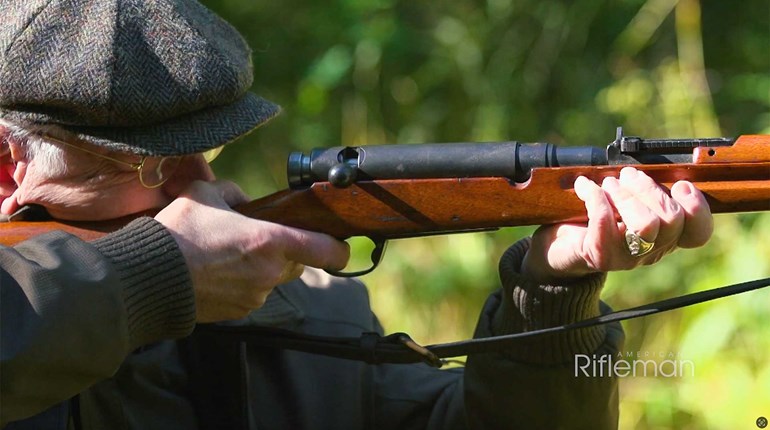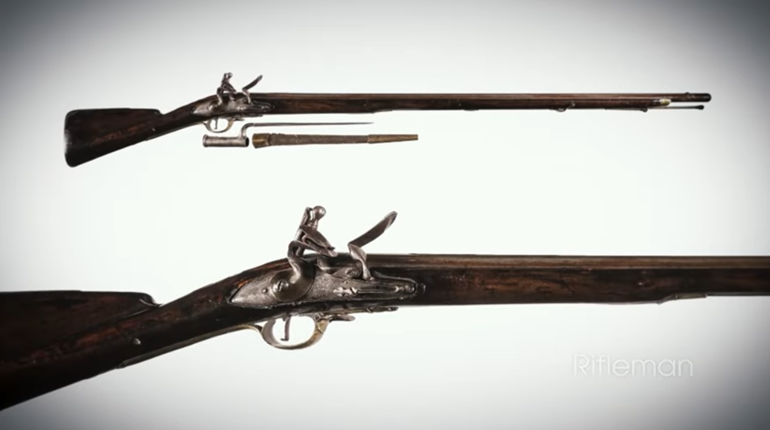
One of the most bizarre stories of WWII finally came to a close on March 9, 1974, 29 years after the official end of the war. It was the day Japanese soldier Hiroo Onoda walked out of the jungle in the Philippines, unloaded his rifle, and surrendered. All that time he had been operating under the belief that the war was still ongoing, and he had faithfully stayed at his post, continuing to fight and survive in the jungle—even after being officially declared dead in 1959.
An Imperial Japanese Army intelligence officer, eventually reaching the rank of Second Lieutenant, Onoda was just 18 when he enlisted in the infantry. Following basic training, on December 26, 1944, he was assigned to Lubang Island in the Philippines to lead guerilla operations. A mountainous island, Lubang is about 18 miles long and 6 miles wide, at the time populated by about 12,000 Filipino civilians.
Onoda’s orders read, “The first thing for you to do is destroy the Lubang airfield and the pier at the harbor. Should the enemy land and try to use the airfield, destroy their planes and kill their crews.”
The orders also stated that under no circumstances was Onoda to surrender or take his own life. However, just in case he changed his mind, his mother had given him a dagger with which to kill himself if he was ever captured. (Gee, thanks, Mom!)
Onoda joined other Japanese soldiers already fighting on the island, but that late in the war they were no match for the combined United States and Philippine Commonwealth forces which landed on February 28, 1945. Before long, all but four Japanese soldiers—Private Akatsu, Corporal Shimada, Private First Class Kozuka and Second Lieutenant Onoda—had either been killed or surrendered. Now the highest-ranking officer of the four, Onoda rallied his three remaining troops, reminding them of the sacred pledge they had each made to the Japanese emperor upon entering the army. Then he ordered them to fight on.
Moving deeper into the mountains of the island, the four soldiers engaged in hit-and-run tactics, including shootouts with local police. Over several years, they killed possibly as many as 30 Filipinos, mostly farmers, taking their food and equipment, and burning their crops. Onoda and his men lived a hand-to-mouth existence, nearly always on the move, the pressure and danger increasing daily. Onoda described the following firefight when he was almost killed.
“A slug from an infantry rifle travels about 670 yards in the first second after firing, but a carbine slug goes only about 500 yards in the first second. The islanders usually had carbines, and if we saw them fire on us from a considerable distance, we knew we had about one second in which to dodge. At night, you can even see a bullet approaching, because it shines with a bluish-white light. I once dodged a flying bullet by turning my body sideways.”
After four years living this perilous lifestyle, Private Akatsu was the first of the four soldiers to give up. Slipping away from the others, he surrendered in 1949. The three remaining men then became even more cautious and alert, believing Akatsu might tell the enemy the locations of their many hideouts.
In subsequent fighting, Corporal Shimada was wounded in the leg during a shoot-out with local fishermen in June 1953. Onoda nursed him back to health over a period of months, only to have Shimada killed by a shot fired from an enemy patrol in May of 1954. Private First Class Kozuka was killed by two shots fired from police in October 1972.
Now alone, Hiroo Onoda became even more elusive and dedicated to his duty, vowing to continue fighting and never be taken alive. Despite leaflets dropped from aircraft multiple times over a period of years stating the war was over, he believed them all to be a ruse, attempts to trick him into surrendering. Current newspapers and magazines were left for him, which he read then disregarded. Letters and photos from his family encouraging him to give up were also airdropped, but he ignored each one.
Toward the end of Onoda’s nearly three decades in the jungles of Lubang Island, some of his family members even joined search parties, hoping to convince him to surrender. He recounted once sneaking to within 150 yards of a man standing atop a mountain, fervently pleading into a microphone attached to a loudspeaker, “Hiroo, come out…this is your brother, Toshio.”
Onoda’s response? “I did not go dare go nearer, because I would have made too good a target,” he said. “I could not see the man’s face, but he was built like my brother, and his voice was identical. That’s really something, I thought. They [the enemy] have found a [Japanese] prisoner who looks like my brother, and he’s learned to imitate my brother’s voice perfectly.”
It was not until the Japanese government located Onoda’s former commanding officer, Major Yoshimi Taniguchi, who had long retired from the army and become a bookseller, that this all-but-unbelievable story comes to an end. Taniguchi traveled to the Philippines, and on March 9, 1974, located and met with Onoda, fulfilling a promise he had made to him in 1944: “Whatever happens, we’ll come back for you.” Taniguchi then read Onoda the following orders:
- In accordance with the Imperial command, the Fourteenth Area Army has ceased all combat activity.
- In accordance with military Headquarters Command No. A-2003, the Special Squadron of Staff’s Headquarters is relieved of all military duties.
- Units and individuals under the command of Special Squadron are to cease military activities and operations immediately and place themselves under the command of the nearest superior officer. When no officer can be found, they are to communicate with the American or Philippine forces and follow their directives.
Hearing those words firsthand from his commander, Hiroo Onoda then bowed and immediately obeyed. He formally surrendered his samurai sword, an Arisaka bolt-action military rifle, several hundred rounds of ammunition, a few hand grenades and the dagger his mother had given him years previously. Ferdinand Marcos, then-president of the Philippines, issued Onoda a full pardon on March 11, 1974, taking into account that Onoda believed the war was still ongoing when he killed Filipinos.
Onoda returned to Japan a national hero. The Japanese government offered him a large sum of money as recompense for back pay, but he turned it down. When the money was ultimately pressed upon him, he donated it to the Yasukuni Shinto Shrine in Tokyo. Hiroo Onoda died just six years ago in 2014, passing away in a Tokyo hospital from heart failure and pneumonia. He was 91 years old.
Surprisingly, Hiroo Onoda was actually not the last Imperial Army soldier to surrender following WWII. Rather, he was the next to last. Teruo Nakamura surrendered later in 1974 on Morotai Island in Indonesia. However, Nakamura was Taiwanese-Japanese by birth, so not considered fully Japanese. There were other circumstances involved with Nakamura’s surrender, and as a result he was not nearly as celebrated as Hiroo Onoda.







































